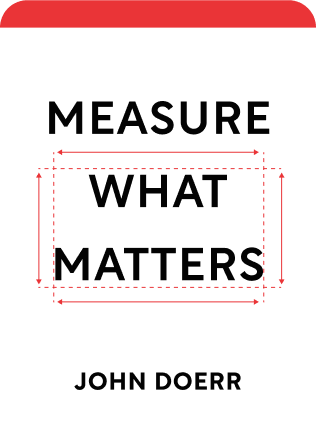

This article is an excerpt from the Shortform summary of "Measure What Matters" by John Doerr. Shortform has the world's best summaries of books you should be reading.
Like this article? Sign up for a free trial here .
What is OKRs history, and why did so many top companies adopt the system of OKRs? What can the history of OKRs tell about why and how they work?
According to OKR’s history, Intel was one of the first companies to adopt the use of OKRs. Then, venture capitalist and former Intel employee John Doerr brought this tactic to Google.
Keep reading to find out more about OKR’s history and why so many companies have turned to using OKRs to track progress.
History of OKRs: Intel and Google
In 1999, Google was a small startup with an ambitious goal: to make the internet relevant and accessible to everyone. Unfortunately, founders Larry Page and Sergey Brin had zero experience managing a company, and there were already 17 other search engines competing for market dominance. Page and Brin had to figure out how to break down their broad, ambitious mission into manageable, measurable pieces, and they had to do it quickly. Luckily, venture capitalist John Doerr, who had a 12% stake in the company, had just the tool: a management system he’d learned as an Intel employee in the ’70s.
Doerr rechristened Intel’s process the “OKR management system,” and Doerr’s Measure What Matters is a guide to implementing this system. As its name implies, the book helps you figure out what matters at your company and how to measure its success.
Google and Stretch Goals
In OKRs history, Google focused on stretch goals. This is how Google distinguishes between regular objectives (“committed objectives”) and stretch objectives (“aspirational objectives”):
- Committed objectives are the goals that need to be met within a set period of time for the company to prosper. Additionally, these goals need to be 100% or near-100% complete (or receive a score of 1.0) by the deadline. Committed objectives include sales and revenue goals around product releases, customer satisfaction, and hiring.
- Aspirational objectives are goals that reflect the bigger picture, outside of day-to-day needs, and focus on big, ambitious ideas. These are often called stretch goals or, in the words of Jim Collins, “Big Hairy Audacious Goals.” (Shortform note: For more on Big Hairy Audacious Goals, read our summary of Collins’s Good to Great.)
Google doesn’t expect everyone to achieve their aspirational objectives, and failure is built into the process—in fact, the average rate of failure at Google is about 40%. In other words, Google considers its cycle’s aspirational goals a success if 60% of them are achieved.

———End of Preview———
Like what you just read? Read the rest of the world's best summary of John Doerr's "Measure What Matters" at Shortform .
Here's what you'll find in our full Measure What Matters summary :
- How Google uses OKRs to rally 100,000 employees in the right direction
- How to avoid setting useless OKRs, and how to set great ones
- Key subtle behaviors your team must master to make OKRs work






